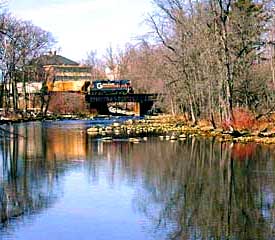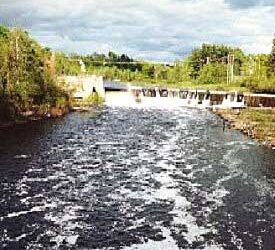A tributary of the Kennebec, rises in North Dexter and flows south for roughly 50 miles, paralleling the Kennebec until the two rivers converge at Winslow. Its 606,000-acre watershed includes over 50 great ponds and a vast network of placid streams and wetlands–making it one of the most important flyways for waterfowl in New England.
The river is home to many rare, threatened, and endangered species including the Tomah mayfly, the Yellow Lamp Mussel, and the Black Tern. It’s also the site of the oldest fish weir in North America, a submereged wooden structure that predates the pyramids of ancient Egypt.
Anglers cherish the Sebasticook for its fine fishing, which improved after the Edwards dam was taken out of the Kennebec. The Sebasticook is also popular with paddlers who enjoy the scenic landscape of gently rolling hills, forest, and farmland.
Like many rivers in Maine, the Sebasticook has seen its share of abuse. Most notably, the East Branch was contaminated with hazardous chemicals from the Eastland Woolen Mill in Corinna.
Although the mill closed in 1996, it’s now an EPA Superfund site, and is currently being cleaned up.
Although the Sebasticook still faces current threats–mainly now from nonpoint source pollution rather than mills or factories–residents and river supporters are working to alleviate these threats and to build on recent successes like the Edwards and Fort Halifax Dam removals.
Sebasticook Regional Land Trust
P.O. Box 184
Unity, ME 04988
Phone: 207-948-3766


